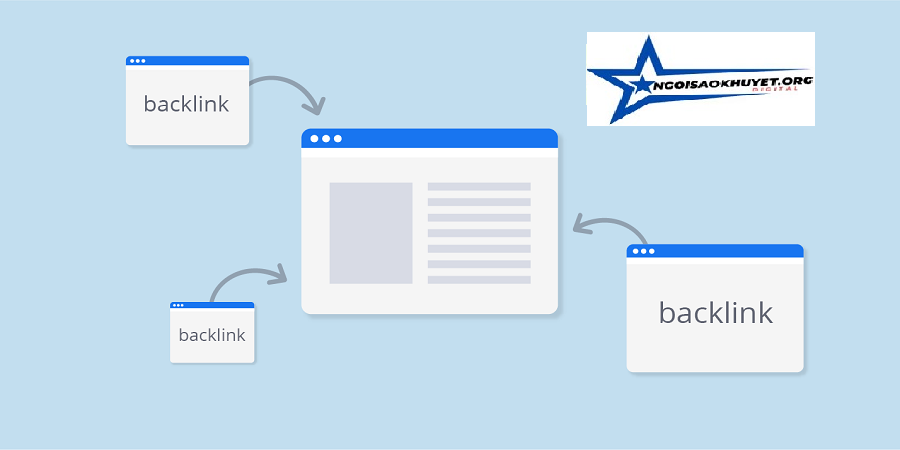Backlink analytics – Backlinks, also known as inbound or incoming links, are links from one website to a page on another website. They play a critical role in search engine optimization (SEO) by serving as indicators of a website’s authority and relevance. Essentially, backlinks function as votes of confidence from one site to another, signaling to search engines that the content is valuable and credible.
Understanding Backlink Analytics: The Basics – A Comprehensive Guide
( Hãy Liên Hệ Với Ngôi Sao Khuyết , Chúng Tôi Sẽ Giúp Bạn Năng Tầm Thương Hiệu Của Mình Cùng Các Dịch Vụ Chuyên Nghiệp Nhất )
Search engines, such as Google, utilize backlinks as a significant factor in their ranking algorithms. A site with a higher number of quality backlinks is more likely to rank well in search engine results pages (SERPs). However, it is essential to understand that not all backlinks are created equal. Quality over quantity is the guiding principle in backlink analytics. High-quality backlinks typically come from authoritative and relevant websites, while poor-quality backlinks from spammy or unrelated sites can negatively impact SEO efforts.
Several key metrics are pivotal in backlink analytics:
- Domain Authority (DA): This metric, developed by Moz, predicts how well a website will rank on search engines based on its backlink profile. A higher DA indicates a stronger backlink profile.
- Page Authority (PA): Similar to DA, PA measures the ranking strength of an individual page rather than an entire domain. It helps in understanding the potential of specific pages to rank well.
- Anchor Text: This is the clickable text in a hyperlink. Search engines use anchor text to understand the context of the linked page. Relevant and natural anchor text can enhance SEO, while over-optimized or irrelevant anchor text can be detrimental.
- Referring Domains: This metric counts the number of unique domains linking to a website. A diverse set of referring domains often indicates a stronger backlink profile.
To effectively analyze backlinks, several tools are available, such as Ahrefs, Moz, and SEMrush. These tools offer comprehensive functionalities including backlink tracking, domain and page authority assessments, and detailed anchor text analysis. By leveraging these tools, businesses can gain insights into their backlink profile and devise strategies to enhance their SEO performance.
Purchase Point: bán backlink

Advanced Techniques for Backlink Analysis and Strategy Development
Service mua backlink Quality. Backlink analysis has evolved beyond simple counting of links pointing to a website. Modern SEO strategies require a nuanced understanding of backlink profiles to stay competitive. One advanced technique is competitor backlink analysis. By examining the backlink profiles of top-ranking competitors, you can identify potential link-building opportunities. Tools like Ahrefs, SEMrush, and Moz offer detailed reports on competitor backlinks, highlighting domains that are likely to link to your site if approached correctly.
Another critical aspect is identifying and disavowing toxic backlinks. Toxic backlinks can harm your site’s rankings and credibility. To identify these, use tools that analyze factors like domain authority, spam scores, and link relevance. Once identified, you can use Google’s Disavow Tool to prevent these links from affecting your site negatively.
Leveraging backlink data to uncover new link-building opportunities is essential for growth. Analyze the backlink profiles of industry leaders to find patterns and potential websites that might be interested in your content. Building relationships with these sites can lead to high-quality backlinks that boost your SEO efforts.
A step-by-step guide to performing a backlink audit begins with collecting all your backlinks using tools like Google Search Console or specialized SEO software. Next, categorize them by quality, relevance, and diversity. High-quality links typically come from authoritative sites within your industry. Assess link diversity by ensuring you have a healthy mix of links from various domains. This balance is crucial for a natural backlink profile.
Monitoring backlink growth over time is another vital aspect. Regularly review your backlink profile to track new links and ensure the continued quality of existing ones. Adjust your link-building strategies based on the analytics to optimize your SEO performance. For instance, if you notice a surge in backlinks from low-quality sites, it might be time to revisit your outreach strategies and focus on higher-quality targets.
Let’s learn about the article: Auto backlinks
Case studies abound that illustrate the effectiveness of these advanced techniques. For example, a tech startup might discover through competitor analysis that most high-quality links come from industry blogs. By focusing on guest blogging and content collaborations with these blogs, they can significantly enhance their backlink profile, leading to improved search engine rankings and increased organic traffic.

